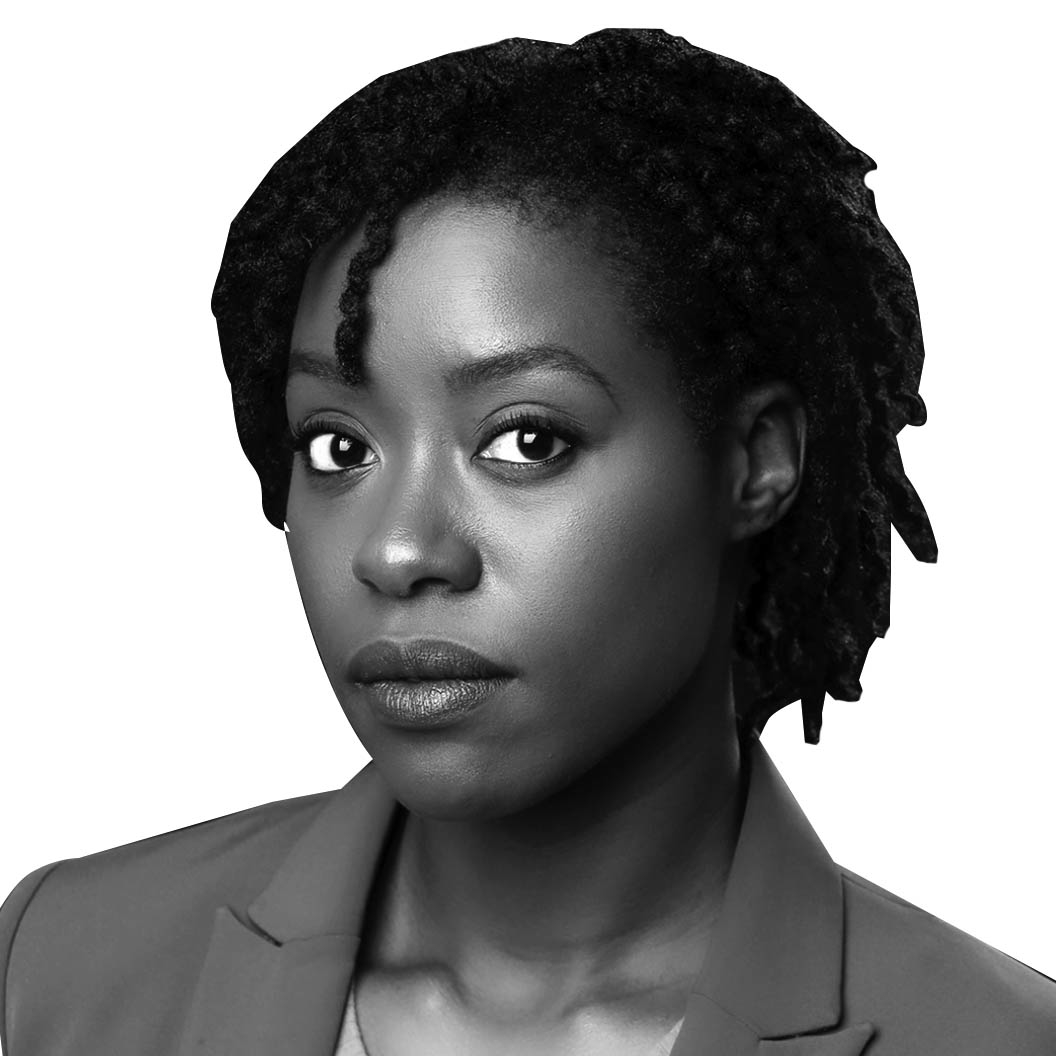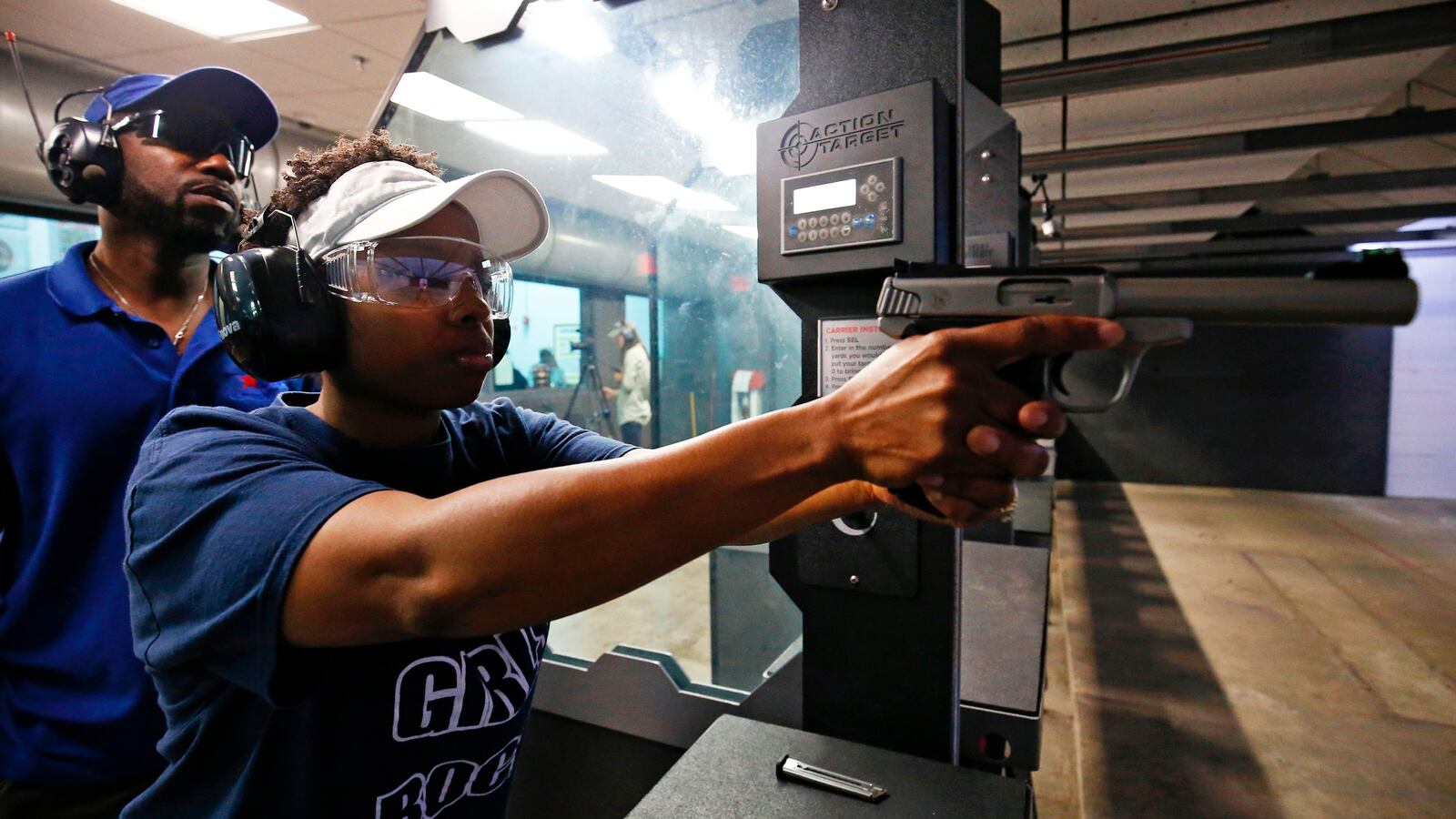Witnessing these last few months in America has really got me thinking about my stance on gun ownership. With civilians essentially given the OK to take their cars and run over demonstrators, a vigilante killing peaceful protesters, and the president telling a white supremacist group to “stand by” (for what, exactly?), I thought—if the racists and MAGA-fanatics are packing heat, why aren’t the rest of us?
Before very recently, I’d never been to a gun range or even held a real gun, because for the longest time, I was afraid of them and what they empower people to do: kill.
But my fear of the lawless state of affairs in the U.S. is stronger, so I set my anxiety aside and decided to take steps to learn more about guns by taking a concealed weapons permit class. Honestly, I didn’t expect to leave the class with much more than an understanding of how and when to carry a concealed weapon so you don’t get arrested.
But when the instructor dug into the laws that are in place to prevent people from going buck-wild with their rifles, something hit me: Why don’t police officers seem to abide by these rules?
This is a relevant disclosure: I’m Black.
I’m sharing that because there’s a trend of uneasy Black Americans, like myself, turning to gun ownership. Why? Because too many people are comfortable playing fast-and-loose with our lives. And when I stepped into this concealed weapons permit class in Central Florida, I saw this movement play out in front of my eyes.
When I pulled up to the address, I was surprised I didn’t see a building with a banner that said “We [heart] guns” or something very expected of Florida. The surrounding buildings didn’t stand out and nothing screamed First Amendment, so I had no clue where I was going. I walked around the outside of this nondescript, brown-roofed building struggling to find the front door in the rain because, aside from a small sign on the sidewalk, it wasn’t clear which suite I was supposed to enter until I was directly in from the door.
Inside was a small, windowless room where the session would be held. The back rows were filled with Black people, several of whom might have come together (I gathered this based on how well they seemed to know one another). There was also my friend (who already owns several guns) and I and several other Hispanics/Latinx and non-Black people of color. It seemed white people were actually in the minority.
Did I mention this was Florida?
Needless to say, I was surprised. The class was taught by two instructors, at least one a current police officer. They were able to make the four-hour class interesting enough, but given the history of police, guns and Black people, my friend and I sat with clenched teeth hoping no one brought up any of the many elephants in the room regarding those subjects. That day, we just wanted to get through this and go home, not join a mini Black Lives Matter protest. (But catch me after a nap and we can talk.)
At the top of the class, the instructors discussed what it means to have a concealed weapon and how the permit works across state lines. Then they moved on to the laws that dictate when you can actually fire a weapon and how to avoid being sued.
For example, they explained that in the state of Florida, if you come across a gunman in a bar after you’ve had a few drinks and happen to shoot the gunman but hit a patron, that’s reckless endangerment and you can get in trouble for that.
That makes sense, and I don’t plan to take a gun to the bar or ever be the “good guy with the gun” (because we’ve seen what happens when the “good guy” is Black), so the topic that made my ears perk up was the discussion of “deadly force.” I was curious to know in which cases deadly force is applicable, because sometimes in Florida, it seems like you can just shoot and kill as you please.
To illustrate, one of the instructors described a few seemingly cut-and-dry scenarios, like this one:
If you’re outside with your child and someone comes up, attacks your kid and walks away, can you use deadly force?
Think about it for a minute. This person hit your kid. If you shot them, it’d be to protect the life of another. You’d stop this person from potentially turning around and hurting them again, so it’s gotta be OK, right?
Wrong.
Your authorization to use deadly force stops the minute a person walks away. Even if you know for a fact that this particular person usually carries a weapon and you’re afraid they might be going to get it, unless the weapon’s presence has been made clear to you, deadly force is not applicable. And most importantly, you can’t make deadly moves based on assumptions.
Most of the folks in the room, myself included, got this one way wrong. We assumed as long as you felt there was danger at any point, you can use your gun to stop it.
When they discussed this in the class, it occurred to me that if anyone modeled their response off of the many times we’ve seen police shoot a Black person even after they’ve walked away or assumed they may have been going to get a weapon, as is the case of Jacob Blake, then it’s no wonder that a lot of us thought that.
During the class, we were told something that I already knew to be true but which struck a different chord hearing it straight from an officer: Cops are scared.
An instructor explains that in Florida, based on the number of concealed weapon permits given out per year, the number of “good” people with guns, and more to the point the number of “bad” people with guns, cops have to assume that every car they stop has a gun inside.
I’d be scared too. But then again, that’s why I didn’t sign up to be a police officer.
There were more restrictions on the use of deadly force for civilians than I expected. In any situation, once you become the aggressor, you no longer have a case for deadly force. And though the rules may vary by state, I wondered why we don’t hold the police to the strict standards we have in one of the most trigger-happy states in the country.
I suppose we wouldn’t want officers to feel too restricted when protecting communities, but the lax protocols that seem to say virtually anything can give a cop cover to say their life was in danger have caused the very pain and suffering that lit the fires of resistance across America.
It will never make sense to me that white mass shooters like Dylan Roof and James Holmes can be taken away in handcuffs despite any reasonable assumption that they could be armed and dangerous, but unarmed Black men like Walter Scott and Elijah McClain can be killed while running away or pleading for their lives in the same states.
While I may be conquering my fear of guns, I don’t think I’ll ever get over my fear of police.






